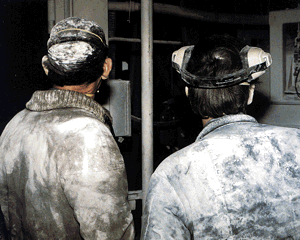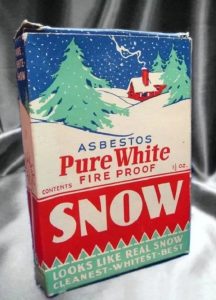Myth #1 – Asbestos is banned and no longer used.
Asbestos regulations in the United States have become more severe since 1991, but the mineral has not been banned all together. Today, over 3,000 consumer goods still contain asbestos. Many of these products can be found in your local hardware or home improvement store. Additionally, asbestos is allowed to remain in buildings constructed before the regulations were put in place. Because of this, many structures that were built or renovated between the 1930s and the early 1980s may still contain asbestos products. If asbestos-containing products are damaged or disturbed, asbestos fibers can enter the surrounding air. If these fibers are inhaled, it can lead to mesothelioma and other health problems.
Myth #2 – Asbestos Should be Removed Right Away
The Environmental Protection Agency (EPA) classifies asbestos as either friable or non-friable. Friable products crush easily with only slight pressure (like between your fingers) and release fibers into the air. Non-friable is the opposite, the material is not easily crushed. It takes mechanical means to make the asbestos fibers airborne. As such, sometimes it is best to just leave the area alone and keep it contained to prevent fibers from becoming airborne.
Whether or not asbestos needs to be removed should be determined by a consulting company, such as ERC. We can assist with identifying asbestos (survey), creating a plan to remove or encapsulate it (specifications), assist with abatement (we work with a select group of contractors), oversee an abatement project (oversight). Conversely, if the material is non-friable and can safely remain in place, ERC offers Asbestos Management Plans to help with managing any non-friable material without removing it.

Myth #3 – You Can Tell Asbestos by Looking at It
While some experienced asbestos inspectors may be able to take an educated guess based on age of the material and what the material is, you cannot just look at the material and know it contains asbestos. The only way to determine if asbestos is present is to test for it. The inspection and resulting report is known as an Asbestos Survey. It includes information such as quantity and location of all “suspect materials” that are sampled and analyzed. The samples are sent to an accredited lab and the report will include the results.
Myth #4 There are Safe Levels of Asbestos
There is no safe level of exposure to asbestos. Asbestos is a fibrous and friable mineral. The fibers can break down to even smaller fibers becoming airborne when disturbed. The asbestos particles are shaped like little hooks that once inhaled latch on to the lungs. This myth probably confuses level of exposure with containment. Asbestos that is properly contained is fairly safe, it’s when the material becomes disturbed that the real danger is posed.
Just like there is no level of exposure that is safe, there is no length of time that is safe either. It is true that the more you are exposed to the deadly mineral the more likely you are to get an asbestos related disease, that doesn’t mean that long term exposure is required for fatal consequences. This myth is likely due to the long 15-50 year latency periods of the various asbestos related diseases.
 Myth #5 The Larger Amount of Exposure – The More Likely a Person is to Get Mesothelioma
Myth #5 The Larger Amount of Exposure – The More Likely a Person is to Get Mesothelioma
There is no proven correlation between the quantity of asbestos exposure and the risk of developing mesothelioma. A person who works one day in a construction or insulation job — both industries which relied on asbestos for much of the 20th century — could find out 30 or 40 years later they have the disease. The only variable is whether or not asbestos fibers entered your body, were not expelled, lodged into the mesothelium and caused cellular mutation.



